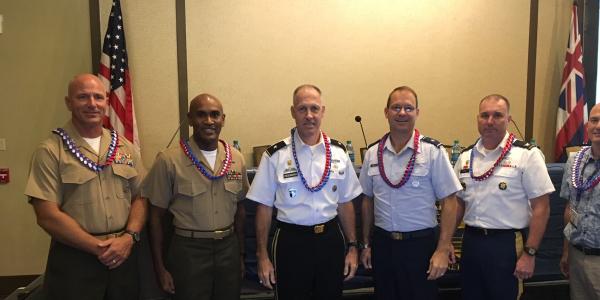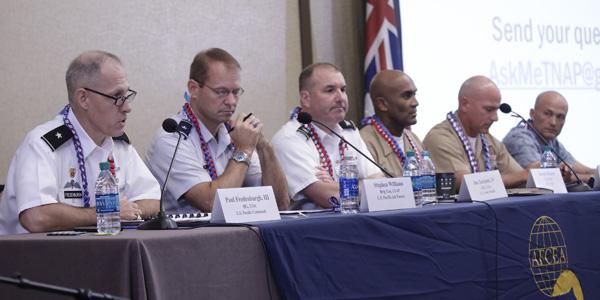Sharing Information Supports Resiliency
Technology is rapidly changing, providing opportunities as well as challenges. The military must be prepared to use the technology and understand the implications of the new technologies both in their hands and in the hands of the adversaries. “If we don’t incorporate the threat that we are going to face, we will be shooting at the wrong duck," said Brig. Gen. Paul H. Fredenburgh III, USA, director, Command, Control, Communications and Cyber (C4), U.S. Pacific Command, leading a panel on cyber resilience and assured command and control at AFCEA TechNet Asia-Pacific.
Command and control (C2) services were built at a time when cyber wasn’t a concern, noted James Williams, N-6 C4I technical director, U.S. Pacific Fleet. C2 services sit on a common network and have to then be transported to a ship and connect to a foreign network. It is challenging because these networks are owned by different people, he said.
The sensors are there, but PACOM and the Defense Information Systems Agency (DISA) need the visibility into service networks to effectively lead the cyber fight in the Pacific theater, related Gen. Fredenburgh. It is also about pulling the data into a space where we can see it emphasized. “We have a picture, but not the right level of picture,” he stated. However, he believes this is something that can be solved relatively quickly.
The theater is vast. Lots of water but also lots of air, stressed Brig. Gen. Stephen C. Williams, USAF, deputy director of Air and Cyberspace Operations, Pacific Air Forces. From the Air Force perspective, it is not just navigating. It is more about knowing what is going on around you. That is more challenging, based on geography and distance, he added.
The common operation picture is improved through network sharing of information. We should be able to share everything we know for all players and use that capability to link up everyone, not just service to service or one domain to another but also with allied countries, the general said.
Multidomain command and control presents a challenge to your adversary when all domains can support what you need to do. With air, cyber, space, sea and under sea, the adversaries cannot stop all levels of sharing. “If they take away cyber, we have other ways.” And if they take away air, we have other ways too, Gen. Williams explained.
Mission partners are important, and actions are needed to improve interoperability and information sharing. “We are making progress on risk, and we talk about interoperability twice a year with our mission partners,” Gen. Fredenburgh stated. The key is to be as flexible as possible and work with standards, he said, adding that this is where we can find some freedom of maneuver.
Given the geography of the region, the issue for command and control also includes bandwidth and connectivity if fiber is compromised.
If fiber is cut, “there are a lot of systems that we have no visibility on that will want to access the same satellites that we will be using for operation and command and control,” stated Col. Joseph (Jay) Matos, USMC, director, Information Environment Operations, Marine Corps Forces Pacific. News agencies will want to use same commercial satellite systems that we do, so the more systems there are, the better, but still satellites are not a full backup for terrestrial fiber lines.
In our theater, with the distances and island nature of the theater, a lot of water and land masses are all connected by cables, acknowledged Gen. Fredenburgh. These are susceptible to natural disasters as well as malicious attack. But we also have to consider the ground stations and the type of modems. We will need both military and commercial satellites for resiliency, and we will leverage to maximum capacity that we can, he added.






Comments